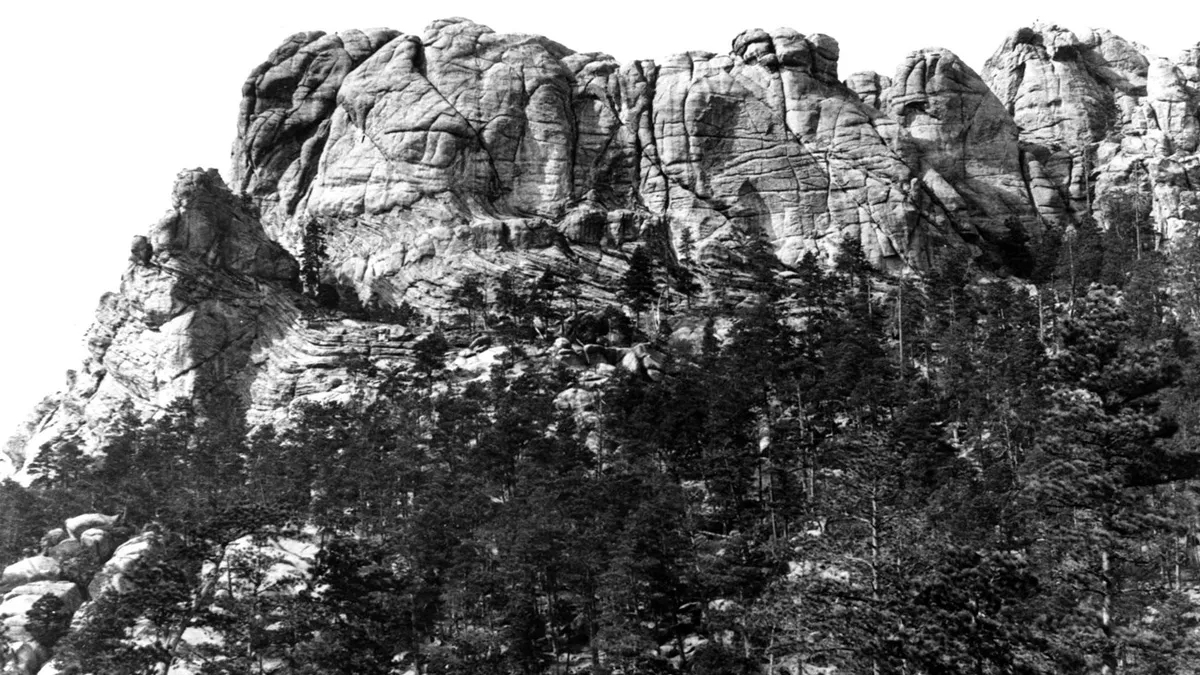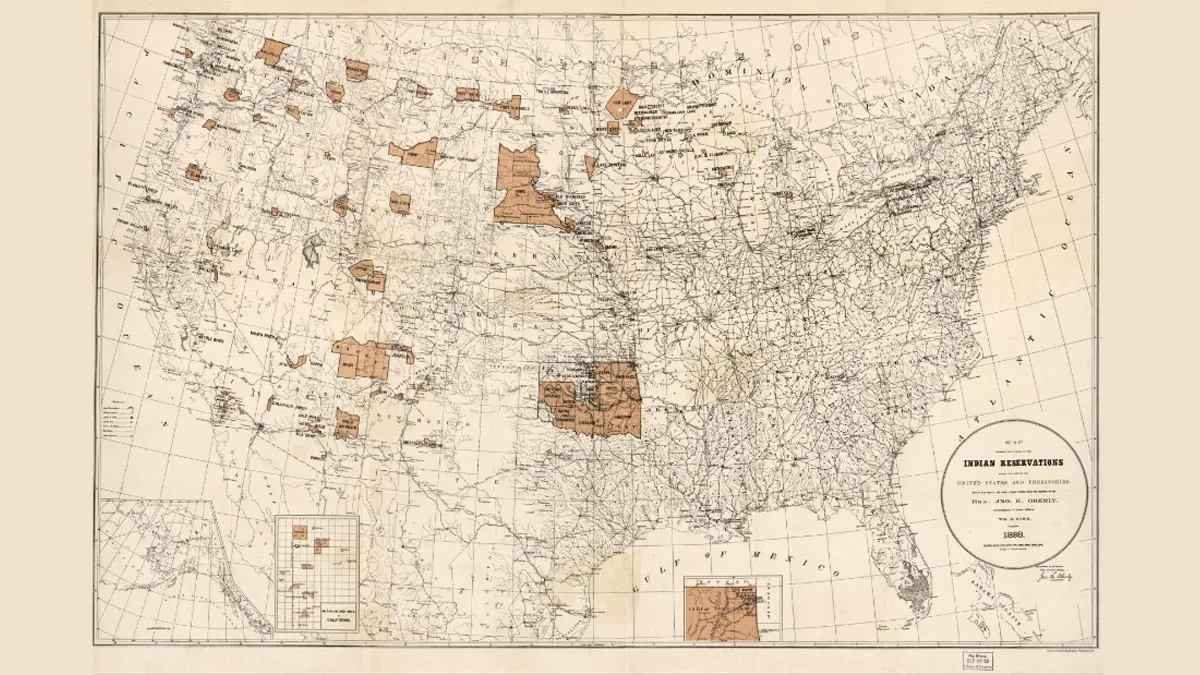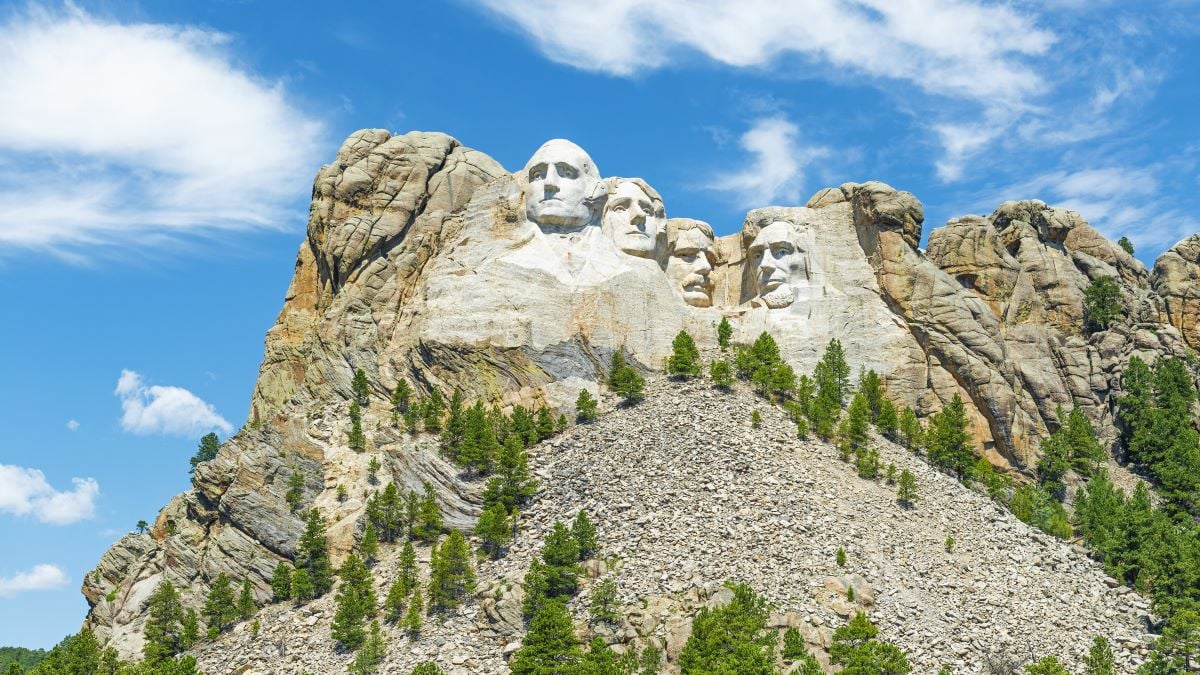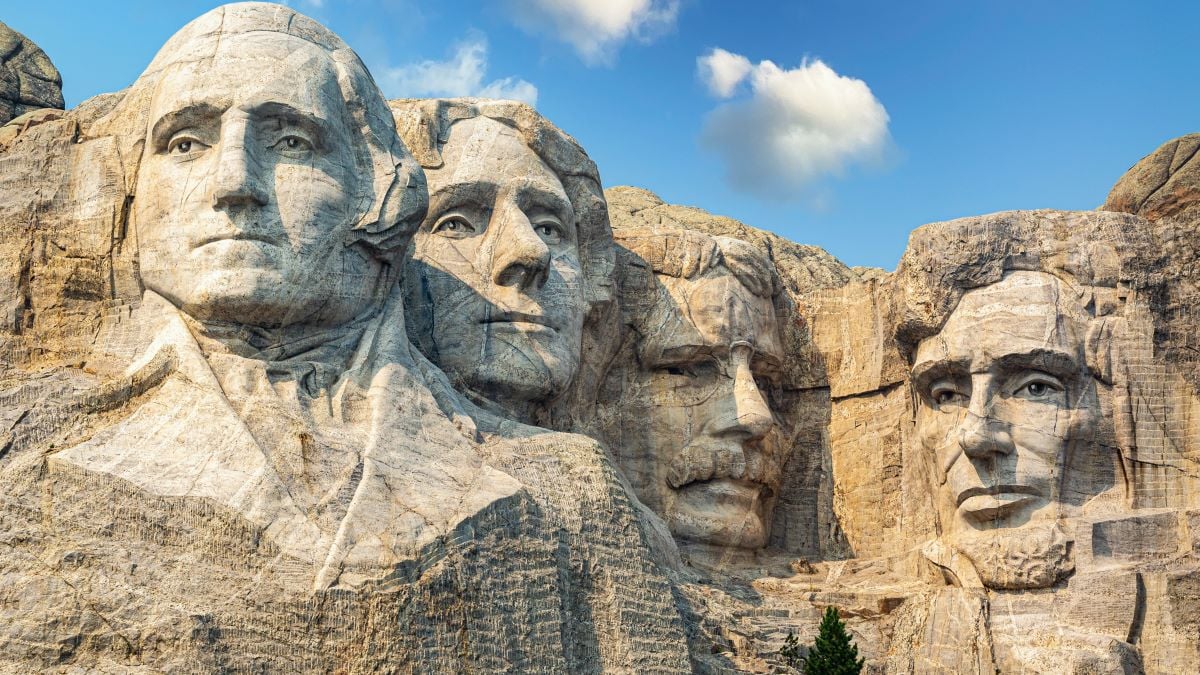The granite mountain we know as Mount Rushmore has been around for tens of millions of years. For centuries, it was a sacred place for the Plains Indian tribes of North America to gather, heal, and pray.
The hills held something of value for white settlers too, though it was more tangible and less spiritual. When gold was discovered in the Black Hills of South Dakota a war would threaten to decimate the already weakened tribes and yet again push them from a land key to their culture, ways of life, and spiritual practices.
Why was Mount Rushmore Sacred to the Plains Indians?

The Black Hills, where Rushmore resides, is known to the Lakota as “The heart of everything that is.” Among the plains Indians (the Lakota Sioux, Cheyenne, and Arapaho, and several smaller tribes) called it “Six Grandfathers” after a Lakota medicine man’s vision.
In his vision, he saw 4 grandfathers in the cardinal directions, each representing a key component of a good grandfather: kindness, love, long life, and wisdom. The final grandfathers were earth and sky, vital aspects of many spiritual practices from across the globe.
Not only did the land have sacred properties to the native tribes, it was also one of the only desirable plots of land allocated to the Native Americans after the Fort Laramie Treaty of 1886. It’s important to note that the US, in no way, gave this land to the Native Americans. At the time, the United States had no claim on the territory.
How did the US steal Mount Rushmore from Native Americans?

The American Indian Wars started in 1609, and for centuries Native Americans had vast tracts of land to travel through and around to avoid conflicts or gain the upper hand in a skirmish. As Westward expansion narrowed the playing fields, the weight of warfare slowly sapped the fight out of the remaining tribes. Again and again, they were driven from their homes and pushed ever further west. Ethnic cleansings, like the Trail of Tears from 1830-1850, broke tribes and collapsed multiple tribes.
Each time the tribes attempted to resettle, inevitably settlers would come and demand land. It’s a fight that’s ongoing even today in Oklahoma.
In the mid-1800s – around 1860 to 1870 – the fighting intensified. The United States reneged on deals to supply the displaced tribes with food, put them under the supervision of violent men, and fought more than one battle that was closer to a massacre than a fight (the Battle of Washita River is just one example).
Finally, the 1867 Report on the Condition of Indian Tribes prompted the government to take a closer look at the reason for the fighting. The survey found that conflict was caused by 4 measurable reasons and one made-up white person point.
- The Native American population was declining.
- The wars were often started by “lawless whites.”
- The wars were caused by Indigenous People losing access to hunting grounds.
- Military men in control of the Indian Bureau were too hard on Native populations whereas civilians were too soft.
- The “evils in the Indian system will not be solved until Indians are civilized or entirely disappear.”
It should go without saying that when a civilization is repeatedly pushed to the brink and its lands stolen, its numbers will decline. The “solution” to these problems was to relocate Native populations to less desirable locations in the West. It established the Great Sioux Reservation with an 1868 treaty. Combined with the Laramie treaty of 1851, it established a sanctuary of sorts, 35 million acres of land spanning from southern North Dakota and Montana, through much of South Dakota, and down to Colorado, Wyoming, and Nebraska.
How did the U.S. steal Mount Rushmore?

Every American student knows of General Custer and the Battle of Little Big Horn. The former Union soldier was a media personality and often brought reporters along with his expeditions. He was an avid writer, and his 1876 book, My Life on the Plains, is a premier source for historians looking to understand U.S.-Native relations from the time.
While Custer is said to have had great relationships with the indigenous scouts in his regiments, he was also the catalyst for the dismantling of the short-lived treaty and the annexation of the Black Hills. In 1974, less than a decade after the treaty was signed, Custer led an expedition into the Black Hills to find a desirable location for a fort and a route to the southwest. Civilians searching for gold accompanied the regiment, and though whether or not a significant amount of gold was located is still disputed, the expedition kicked off the Black Hills Gold Rush (think HBO’s Deadwood).
Settlers flocked to the Hills to find their fortune, invading allocated lands once again. The influx of settlers rightfully enraged the tribes, who fought back under the guidance of Native American legends like Sitting Bull and Crazy Horse. But it was a battle they could not win. Any Native that opposed government forces or refused to cede their land was captured or killed. The conflict was a major sticking point for the 1876 election.
By 1877, the United States forced the Sioux to relinquish 50 miles of land in the Dakota territory – including the spiritual Black Hills. The once massive reservation was halved, with the less desirable land given back to the Lakota, Sioux, Cheyenne, Arapaho, and many others, and the other put up for sale to settlers.
Less than 50 years later, Gutzon Borglum began construction on Mount Rushmore. Ironically, he intended the monument to idealize westward expansion, and originally planned for the faces of Sacagawea, Lewis and Clark, Sitting Bull, and Crazy Horse to decorate the mountain. Instead, for 14 years, Borglum and his son used dynamite to blast the faces of presidents George Washington, Thomas Jefferson, Abraham Lincoln, and Theodore Roosevelt – who famously said that, “the only good Indian is a dead Indian – into the granite of the mountainside.
For the Lakota, the defacing of the mountain felt like a final act of conquest.
Many Americans may feel that Mount Rushmore’s colossal visages stand for the “Shrine of Democracy” as Borglum intended. But for those who descended from the people who once fought and died for the land that was promised, Mount Rushmore will stand as the “Shrine to Hypocrisy” until time takes its inevitable toll on the monument.







